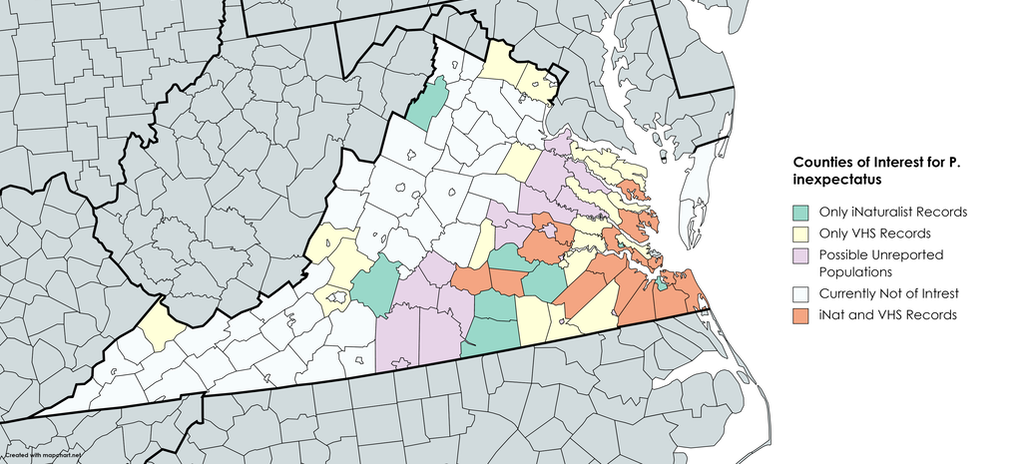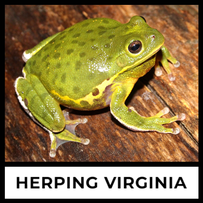Species Information
Recognized Subspecies in VA: None
Size: 5.5 - 8.5 inches Range: Central and southern Piedmont and Coastal Plain; rare in parts of the Blue Ridge Status: Least Concern This species was discovered in the 1930's, hence the name "inexpectatus", yet it is the most common lizard in the southeastern US. This species inhabits pine forest, sandy swamps, dune forest, and dry hardwood forest. They can be found by scanning basking areas and flipping debris. Though though of as coastal and southern piedmont, there is a random population of unknown origin in Shenandoah County south of Strasburg. There are several historical records I am hoping to confirm or deny, but until then, we are just going to assume the populations are misidentified or not present into the current day. This species starts as black, with blue tails, and five pinstripes down the body. These pinstripes start out orange on the head, and grow paler down the body. With age, these lines become more pale, and the females lighten to a gray, while males become gray, olive, or even copper in color. The mid-dorsal line may even disappear on males, leaving them with only the lower lines. Similar Species: These are very similar to the Common Five-lined Skink, but Commons have three scales between the mid-dorsal line and lateral, while Southeasterns have 4-5. Commons also have a wide post-venter scale row that runs down the tail, and males have wider heads. Juvenile Commons also lack the orange color on their facial lines. The Broadhead Skink is larger as adults, and males have very wide heads. Scale counts from the mid-dorsal can help, as well as juvenile Broadheads can have seven lines, but by far the best way to ID is the post labial scales. Southeasterns have two medium-sized post labials, while the Broadhead lacks or has one small one. Maps and External Sources
Comments are closed.
|
Species ProfilesThis page contains species information and links to external sites. Categories
All
|
|
Herping Virginia encourages all naturalists to practice ethical, safe, and sustainable herping. The use of proper herping methods and techniques is beneficial to both wildlife and herpers. Visit the links below for more information.
|
Copyright © 2024 Herping Virginia


